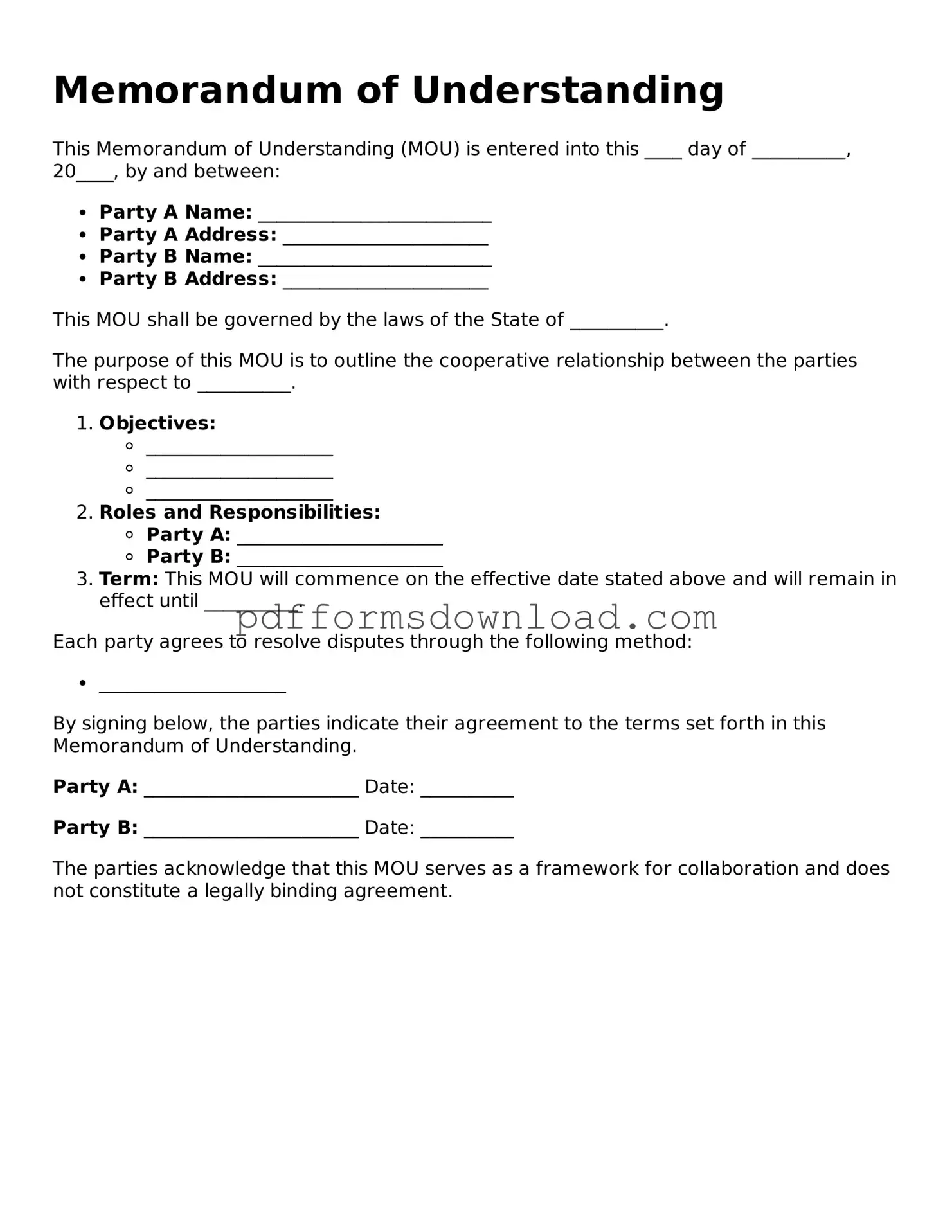What is a Memorandum of Understanding (MOU)?
A Memorandum of Understanding (MOU) is a formal agreement between two or more parties that outlines their intentions and commitments regarding a specific project or collaboration. While an MOU is not legally binding, it serves as a framework for cooperation and establishes the groundwork for future agreements. It typically includes the goals of the partnership, the roles and responsibilities of each party, and any timelines or milestones that have been agreed upon.
When should an MOU be used?
An MOU is useful in various situations, particularly when parties wish to clarify their mutual understanding before entering into a legally binding contract. It can be employed in academic collaborations, business partnerships, or community projects. An MOU can help ensure that all parties are on the same page regarding expectations and objectives, thereby reducing the potential for misunderstandings later on.
What elements should be included in an MOU?
While the specific content of an MOU can vary based on the context and the parties involved, several key elements are typically included. These may consist of the purpose of the MOU, the names of the parties involved, the specific roles and responsibilities of each party, timelines for completion, and any resources or support that will be provided. Additionally, it is advisable to include provisions for resolving disputes, should they arise, and a section outlining how the MOU can be amended or terminated.
Is an MOU legally binding?
Generally, an MOU is not considered legally binding. It functions more as a statement of intent rather than a contract. However, certain provisions within an MOU can be legally enforceable if they meet the criteria of a contract, such as mutual consent, consideration, and a clear understanding of terms. It is important for parties to clearly indicate their intentions regarding the binding nature of the MOU to avoid any confusion.
